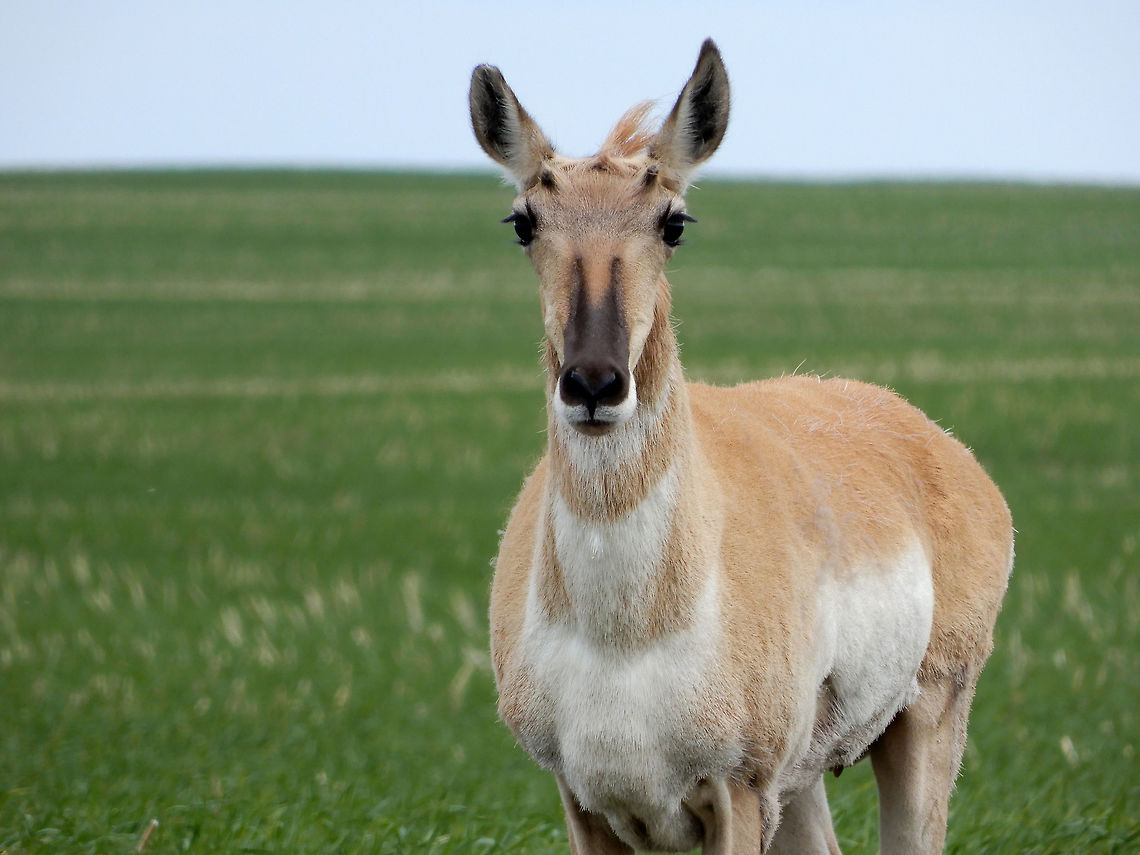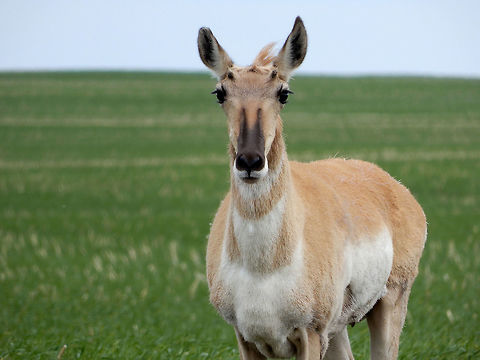 PromotedCountry intro
PromotedCountry intro
Pronghorn
This female Pronghorn (Antilocapra americana) took time out of her grazing to see what was going on. Her trust and curiosity made me fall in love with her and made me realize how beautiful nature is. Found in Southern Alberta on the Prairie, Legend, Alberta, Canada. Conservation Status: vulnerable (S3) in Alberta, CA (NatureServe).

The pronghorn is a species of artiodactyl mammal indigenous to interior western and central North America. Though not an antelope, it is often known colloquially in North America as the prong buck, pronghorn antelope, ''cabri'' , or simply antelope because it closely resembles the true antelopes of the Old World and fills a similar ecological niche due to convergent evolution.
It is the only surviving member of the family Antilocapridae. During the Pleistocene period, 12 antilocaprid.. more

comments (14)
"The Pronghorn (Antilocapra americana) is a true original. A North American native found nowhere else in the world. They don't have any close relatives in North America (or on any other continent), and are unique enough to have their own taxonomic family, Antilocapridae. Pronghorns live in open prairie and desert habitats in western North America, where they spend their days eating and resting with their herd. They are named for their unusual horns, which are a cross between horns and antlers. In fact, they are the only animals on earth that have forked horns that shed yearly. And, they have many other features that make them exceptionally distinctive. For example, they are the fastest land mammals in North America and can run at nearly 60mph, effectively leaving potential predators in the dust! Always alert to danger, they don't sleep for more than 10 minutes at a time. If a predator does catch up to them, pronghorns shed their hair as a defensive strategy; so, the predator gets a mouthful of fur, not flesh. Even the young have protective tactics: they have no odor and they instinctively lay motionless for hours after being born. Pronghorns are herbivorous, opportunistic foragers and regularly travel up to 300 miles in search of green pastures, which is the longest migration of any land animal on the continent. Plus, they can go weeks without water, getting moisture from their food and from the mist in the air. Furthermore, they can survive a temperature range of 180 degrees, from 130F in deserts to -50F! Amazing!
These graceful creatures have long been admired for their speed and adaptability. As a reliable food source, pronghorns have had a prominent role in the history of North America. With a historical population of around 100 million individuals, they were once more numerous than bison. But, by 1920, there were fewer than 20,000 pronghorn left. In the past, their main obstacles involved dealing with weather and natural predators. Today, their bigger threats include habitat loss, overhunting, and impassable fences. They have persisted in an environment where so many other animals have perished. Yet, now they are in danger too. Hopefully conservation efforts will succeed in creating wildlife corridors and in reducing conflicts between pronghorns and people. {Spotted in Canada by JungleDragon user, gmspanek} #JungleDragon" Posted 7 years ago
http://digital.tudor-rose.co.uk/cbd-book/85/?fbclid=IwAR00x6LAJTr9uOJ9Ib4q6uRfvRxqV57lXqgAQ8cOcddgkH-lUdkuRf4Iaz4 Posted 5 years ago
I've seen Pronghorns from a great distance many many years ago... they are very fearful if I remember correctly. Posted 5 years ago